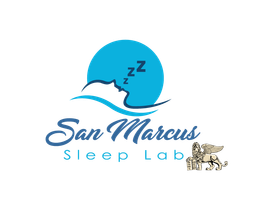Do you know that Sleep Apnea
Breathing Again
Sleep disorders, including sleep apnea, have become a significant health issue in the United States. It is estimated that 22 million Americans suffer from sleep apnea, with 80 percent of the cases of moderate and severe obstructive sleep apnea undiagnosed. OSA, which represents the great preponderance of the cases, when left untreated can lead to high blood pressure, chronic heart failure, atrial fibrillation, stroke, and other cardiovascular problems; it is associated with type 2 diabetes and depression; and is a factor in many traffic accidents and accidents with heavy machinery, owing to the persistent drowsiness suffered by many OSA patients before the disease is recognized and treated. The public and the health community are generally aware of the increasing obesity of Americans, a phenomenon related to the increase in sleep apnea. Few outside the sleep medicine community, however, are aware that too little good sleep appears to be as much a factor in obesity as too much food and too little exercise.
Sleep Studies
A MAJOR TOOL TO DEFEAT YOUR SLEEP DISORDER:
YOU SLEEP WHILE WE MONITOR YOUR FUNCTIONS
People with obvious sleep problems usually have no problem talking about their nighttime difficulties and describing them in detail. While doctors need to hear those patients, there are times when a more objective test is used to measure how well you sleep and what occurs to your body when you sleep, or try to.

Baseline/Sleep Study
Polysomnography
Polysomnography is the simultaneous recording of multiple physiologic signals during sleep. The signals generally included are: brain waves (electroencephalogram, or EEG); eye movements (electrooculogram, or EOG); chin muscle activity (chin electromyogram, or EMG); air flow from the nose and mouth; chest and abdominal movement; blood oxygen levels (oximetry); heart rate and rhythm (electrocardiogram, or ECG); and leg movements (leg electromyogram, or EMG). The EEG, EOG, and chin EMG signals are necessary to determine whether a person is awake or asleep, and also to determine whether his or her pattern of sleep is normal. For an example of the kind of data that can be collected in a sleep lab, visit the Sleep Lab Interactive and check out the apnea example.
Polysomnography is usually performed in a sleep laboratory with monitoring by a sleep technician. In people with OSA, polysomnography recordings demonstrate repetitive episodes of breathing pauses despite efforts to breathe. It is considered the "gold standard" for diagnosis.

Cpap and Bipap therapy
A CPAP titration study is a specific sleep study to measure and adjust CPAP therapy. Sleep medicine professionals typically perform this study after you have a baseline in-center overnight sleep study called a polysomnography (PSG).
The reason behind the CPAP titration study is so the sleep medicine specialist can:
- Determine how to treat your sleep apnea optimally through the use of a CPAP machine
- Choose the correct mask and pressure to eliminate your apnea episodes.
Sleep professionals commonly prescribe CPAP therapy to effectively manage sleep-related breathing disorders such as:
- Obstructive sleep apnea
- Hypoxemia
- Hypopneas
Once you’re diagnosed with any one of the disorders above, your doctor will order a CPAP titration study before you start treatment.
You may have your CPAP titration study on the same night you have your in-lab PSG study. When this occurs, it’s called a split-night sleep study with the CPAP titration study occurring during the second part of your night.

Multiple Sleep Latency Test (MSLT)
Narcolepsy is a rare condition that affects between 135,000 and 200,000Trusted Source people in the United States, according to National Institute of Neurological Disorders and Stroke. The condition causes you to feel excessively sleepy during the day and affects your sleep-wake cycle.
Narcolepsy can be confused with other disorders that might disrupt sleep, such as sleep apnea, brain injuries, and depression. You’ll need to have tests done to confirm that narcolepsy is causing your symptoms. The primary tests use to diagnose narcolepsy are a polysomnogram and a multiple sleep latency test (MSLT).

Split Night Study
A sleep study during which a patient undergoes standard polysomnography during the first two hours of sleep. If the patient is noted with severe sleep apnea CPAP is initiated in an attempt to determine treatment options during a single night's evaluation. If the patient is noted with less than severe sleep apnea in the first 2 hours of sleep the study is compleated as a standard overnight polysomnography.

Consultation
Consultation and full evaluation with a Board Certified in Sleep Specialist can be arranged prior to possible testing, or following initial testing, on request.
San Marcus Sleep Lab
Our Sleep Center










San Marcus Sleep Lab, LLC
5941 NW 173 Drive, Suite 1 - Hialeah, FL 33015
(786) 953-6020 Fax: (305) 701-4101
e-mail: info@smsleeplab.com
Do you Suffer from any of these conditions?
* Heart Failure * Diabetes
*Stroke * Depression
*Hypertension * Impotence
There is Help !
And is covered by your insurance
Talk to your doctor about ordering a Sleep Study at our lab Center.
We need your consent to load the translations
We use a third-party service to translate the website content that may collect data about your activity. Please review the details and accept the service to view the translations.

